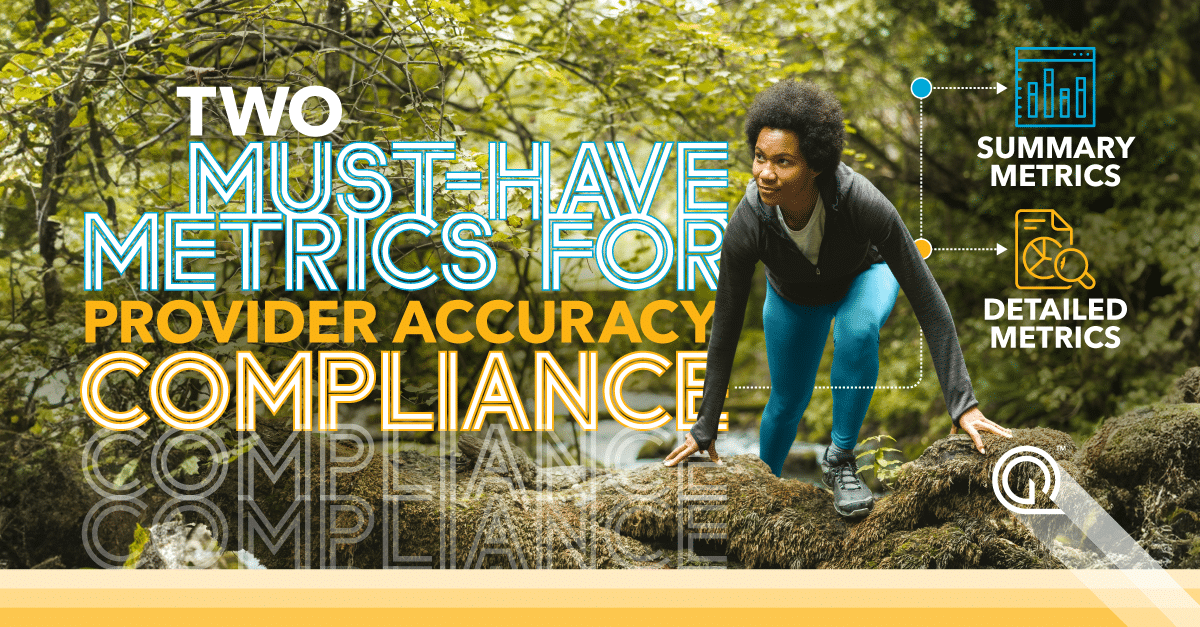Federal and state policymakers are taking a variety of measures to improve access to mental health services and substance use disorder treatments. Network adequacy and access are prominent areas of such a response directly affecting health plans. This blog post informs stakeholders about the increased emphasis on behavioral health networks and tips on how to get ahead of the curve.
MENTAL HEALTH AND SUBSTANCE USE DISORDER PROVISIONS OF THE CONSOLIDATED APPROPRIATIONS ACT, 2021
Enforcement of the Mental Health Parity and Equity Addiction Act (MHPAEA) of 2008 continues to be a priority of both Congress and the federal agencies that regulate health plans. The Consolidated Appropriations Act, 2021, (CAA) Section 203, amended MHPAEA, in part, by expressly requiring group health plans and health insurance issuers offering group or individual health insurance coverage that offer both medical/surgical (M/S) benefits and mental health and substance use disorder (MH/SUD) benefits and that impose non-quantitative treatment limitations (NQTLs) on MH/SUD benefits to perform and document their comparative analyses of the design and application of NQTLs.1 On April 2, 2021, new frequently asked questions (FAQs Part 45) from the Departments of Labor (DOL), Health and Human Services (HHS), and the Treasury (collectively, “the Departments”) provided additional guidance to health plans on Section 203 of the CAA.
Stating that, “Health plans and issuers must make their comparative analyses available to the Departments or applicable State authorities, upon request, beginning 45 days after the date of enactment of the Appropriations Act (CAA).” This means that the requirements started February 10, 2021, and health plans and issuers should now be prepared to make their comparative analyses available upon request.
The FAQs included additional detail on the type of information plans must make available in response to a request for documentation of their comparative analyses. They explicitly state that one area of focus is standards for provider admission to participate in a network.2 This action builds off previous FAQs confirming that network adequacy is an area of concern – and a springboard for identifying potential MHPAEA violations. In 2019, the Departments noted that greatly disparate results in a plan’s network development—for example, a network that includes far fewer MH/SUD providers than medical/surgical providers—are a “red flag” that a plan or issuer may be imposing an impermissible NQTL. As such, further review may be required to determine parity compliance.3
Moreover, in the same guidance, the federal agencies recognize an inaccurate provider directory undermines access to services and ultimately, network adequacy. Expectations that health plans maintain an accurate provider directory are included as well.
STATE DEVELOPMENTS SPECIFIC QUANTITATIVE STANDARDS FOR MENTAL HEALTH AND SUBSTANCE USE DISORDER
As of 2020, approximately 16 states have adopted specific quantitative standards for MH/SUD providers and facilities for at least one type of insurance product.4 These laws often complement MH/SUD benefits laws in ensuring that health plans not only cover specific services but also have an adequate provider network to cover these services. In the 2021 legislative session, two states took noteworthy and prescriptive actions to place greater responsibility on health plans for behavioral health network management.
ILLINOIS ENACTED SENATE BILL 471
Effective January 1, 2022, SB471 requires health plans to comply with a time and distance standard for access to treatment for mental, emotional, nervous, or substance use disorders or conditions. In certain metro counties in the state, with limited exceptions, the state will require a health plan to ensure that an enrollee does not have to travel longer than 30 minutes or 30 miles from his or her residence to receive outpatient treatment for mental, emotional, nervous, or substance use disorders or conditions. Wait times must not exceed 10 business days between requesting an initial appointment and being seen by the facility or provider for outpatient treatment or 20 business days between requesting a repeat or follow-up appointment for outpatient treatment.
OREGON HOUSE BILL 3046
Effective January 1, 2022, HB 3046, requires health plans to regularly measure and report to the state where disparities exist between mental health and substance use disorder (MH/SUD) benefits and physical health benefits. Plans must have an adequate number and distribution of behavioral health provider types (LPCs, LMFTs, LCSW, psychiatric NP, psychologists and psychiatrists) accepting new patients and able to treat the specific and specialized behavioral health needs of their enrollees. Health plans will also need to report the percentage of claims for behavioral health benefits and medical and surgical benefits that were paid to in-network providers and the percentage of such claims that were paid to out-of-network providers. The law also expands upon the state’s longstanding mental health parity law in several other ways.
PENNSYLVANIA INSURANCE DEPARTMENT LAUNCHES ‘REACH OUT PA: YOUR MENTAL HEALTH MATTERS’
In January 2020, the Pennsylvania Insurance Department (PID) launched a multi-agency effort, ‘Reach Out PA: Your Mental Health Matters,’ aimed at expanding resources and the state’s comprehensive support of mental health and related health care priorities in Pennsylvania. The Department of Health is conducting a review of the current network adequacy process to ensure that consumers enrolled in the Medicaid program and commercial insurance products can access mental health care providers when services are necessary and without prohibitive costs.
KEY TAKEAWAYS
The writing is on the wall that regulators expect – or will expect – health plans to increase focus and resources on behavioral health network management and access. As the regulatory landscape for behavioral health access issues continues to mature, a health plan would be well served to take proactive steps to measure, monitor, and manage its network. The key to taking this initiative is to truly understand different aspects of the plan’s network, such as:
• The volume of in-network MH/SUD providers, broken down by categories, and comparing this number to the number of in-network physical health providers as well as the pool of available, but not contracted, providers
• The number of in-network providers accepting new patients
• The MH/SUD access (distance) to care compared to physical health providers
• The number of different locations that a given in-network provider is accepting and/or seeing patients
• Provider-enrollee Ratios between MH/SUD providers and physical health providers
Mental health parity compliance is intimidating and difficult to truly manage without adequate resources. Quest Analytics works closely with CMS and other regulators on network adequacy and accuracy and is committed to partnering with plans to get ahead of potential mental health parity issues before the red flags are raised.
MARKET-LEADING NETWORK ADEQUACY COMPLIANCE
See your provider network on a new level. Quest Enterprise Services Network Adequacy Templates give you unprecedented transparency to easily measure network adequacy, allowing you to focus on what matters most: keeping your members healthy and happy. Discover how we help clients achieve compliance while growing membership and market share. Schedule a complimentary consultation today!

Sources
https://www.dol.gov/sites/dolgov/files/EBSA/about-ebsa/our-activities/resource-center/faqs/aca-part-45.pdf
https://www.dol.gov/sites/dolgov/files/EBSA/about-ebsa/our-activities/resource-center/faqs/aca-part-45.pdf
https://www.dol.gov/sites/dolgov/files/EBSA/about-ebsa/our-activities/resource-center/faqs/aca-part-39-final.pdf
Legal Action Center and Partnership to End Addiction, Spotlight on Network Adequacy Standards for Substance Use Disorder and Mental Health Services: Federal and State Regulation and Enforcement of the Parity Act, May 2020, available at: https://www.lac.org/assets/files/Network-Adeqaucy-Spotlight-final-UTO.pdf










